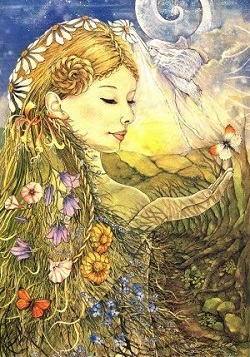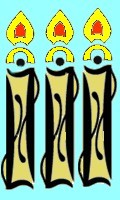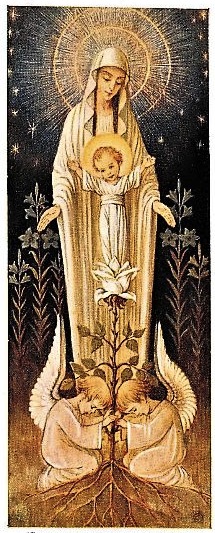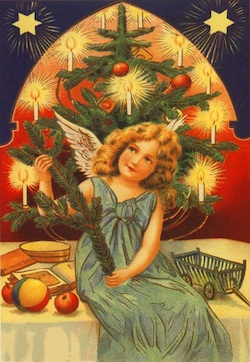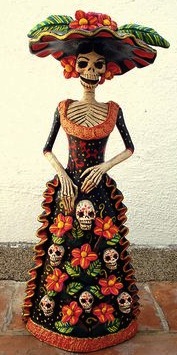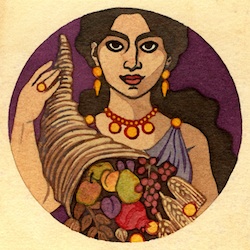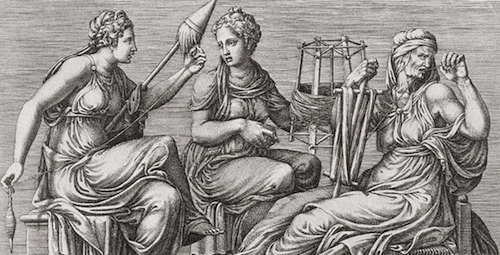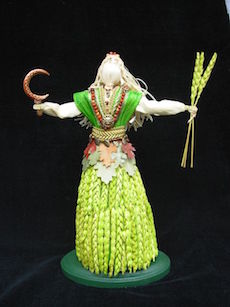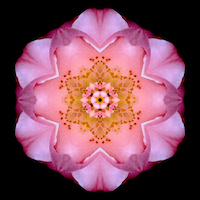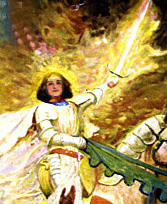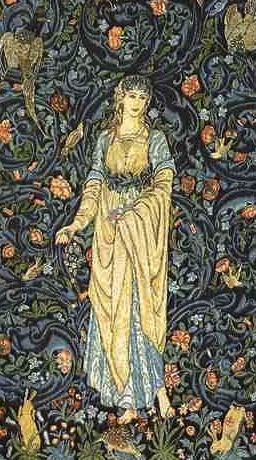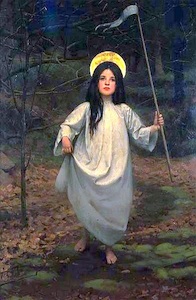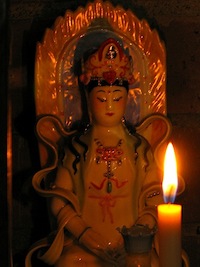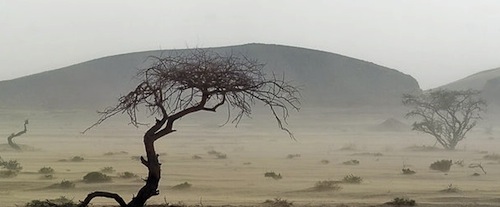
Now from the time when the Daughter of Heaven had passed through the first gate of Hell, a barrenness had fallen on the earth; and neither bird had sung nor any flower showed its beauty forth; nor was there joy in any heart. But when the Maid was slain upon the pillar of the world, an awful darkness fell on all the earth. And the rivers of the earth ceased to flow, but drained away into the salt sea, and the sea ceased to move, but stood still in awful stagnancy... And every growing thing began to wither from its roots.
From The Mythos of the Divine Maid
The story-beyond-time of the Maid's journey to the Dark Realm has been expressed throughout history; for some ancient examples see the article on Demeter and Persephone.
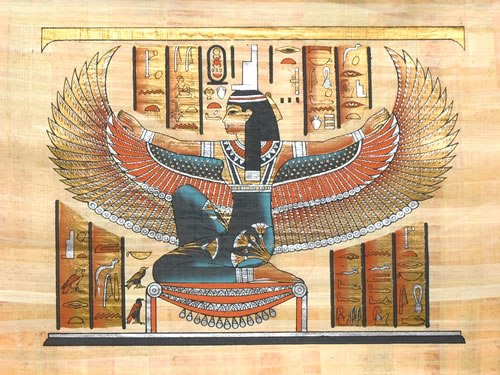 May Day is the Festival of the Queen of Heaven. This is a title that has been given over the centuries to many manifestations of the Divine Mother, including Isis, pictured above. Isis was the Queen of Heaven not only in ancient Egypt but also throughout the later Roman Empire, where her worship rivaled that of the older Roman gods and vied for popularity with the emerging Christian faith.
Read all about May Day
May Day is the Festival of the Queen of Heaven. This is a title that has been given over the centuries to many manifestations of the Divine Mother, including Isis, pictured above. Isis was the Queen of Heaven not only in ancient Egypt but also throughout the later Roman Empire, where her worship rivaled that of the older Roman gods and vied for popularity with the emerging Christian faith.
Read all about May Day  May Day is the Festival of the Queen of Heaven. This is a title that has been given over the centuries to many manifestations of the Divine Mother, including Isis, pictured above. Isis was the Queen of Heaven not only in ancient Egypt but also throughout the later Roman Empire, where her worship rivaled that of the older Roman gods and vied for popularity with the emerging Christian faith.
Read all about May Day
May Day is the Festival of the Queen of Heaven. This is a title that has been given over the centuries to many manifestations of the Divine Mother, including Isis, pictured above. Isis was the Queen of Heaven not only in ancient Egypt but also throughout the later Roman Empire, where her worship rivaled that of the older Roman gods and vied for popularity with the emerging Christian faith.
Read all about May Day 

